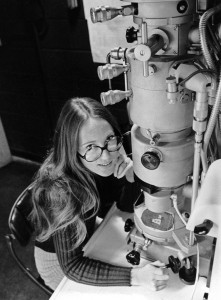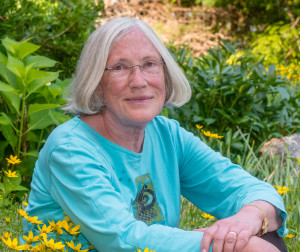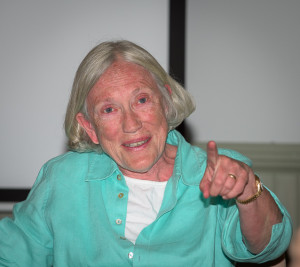Story has served on the Scientific Advisory Board of the Allen Institute for several years. The importance of that work was underscored recently by a landmark paper, Survey of spiking in the mouse visual system reveals functional hierarchy, Nature 592: 86-92, 2021. In that work, scientists at the Allen Institute of Brain Science reported on physiological recording of more than 100,000 units in six brain regions, and variations with changes in visual stimuli. The paper illustrates the power of a systematic approach to brain structure and function, devised so that the results are of immediate use to the larger scientific community.
Author Archives: Dennis Landis
The Next Generation
The National Academies of Sciences, Engineering and Medicine have just published a Consensus Study Report, titled: The Next Generation of Biomedical and Behavioral Sciences Researches: Breaking Through. Dr. Story Landis was a member of the Committee writing the report. Her leadership in mentoring and in science policy was essential to the report, and she has made another major contribution to the continued success of neuroscience research.
Landis Award for Outstanding Mentorship
Dr. Story Landis has served as an informed, supportive and effective mentor throughout her career. The National Institutes of Health has recognized and celebrated this with a new award, named after Dr. Landis. The program announcement reads in part: “An extraordinary individual mentor, Dr. Landis generously provided her time and energy to support countless scientific investigators as they navigated the professional landscape of biomedical research.”
https://www.ninds.nih.gov/Funding/About-Funding/landis-award-for-outstanding-mentorship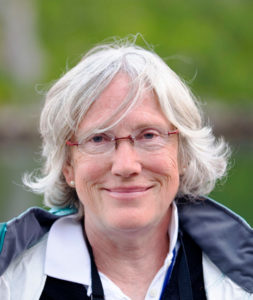
Continued progress at an important time
As Vice-Chair of the Forum on Neuroscience and Nervous System Disorders of the National Academy of Medicine, Dr. Story Landis presided at a recent meeting of the Forum. The agenda included a review of priorities and plans for future directions of the National Institute of Mental Health, presented by Dr. Joshua Gordon. Dr. Joshua Sanes led a thought-provoking discussion of the legal implication of new neurotechnologies. After a presentation by Dr. Carlos Pena on evolving ideas at the FDA, there was a informative discussion of the ideas and attitudes toward new technology at the MRC, led by Dr. David Pardoe.
This review and update session of the Forum was followed by a workshop dealing with Biomarkers of Neuroinflammation. This posed a great opportunity for scientific interaction, including clinical application, and informed regulatory decision making as well.
Encouraging the scientists to come
Dr. Story Landis visited the Biddeford campus of the University of New England on March 10, 2016, and presented a talk about preparing for a future of scientific research. She was especially effective in this setting because she, too, had undertaken research training as an undergraduate, and understood the complexities of the endeavor. Students and faculty attending the events benefited from her extraordinary range of experience and her success despite an array of obstacles.
Gerard Prize awarded to Dr. Story Landis
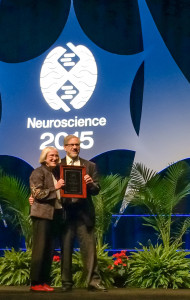
Dr. Story Landis receiving Gerard Prize from Dr. Steven Hyman, President of the
Society for Neuroscience
The press release from the Society says it all:
“10/9/2015 | For immediate release
Story Landis Receives Ralph W Gerard Prize in Neuroscience
WASHINGTON, DC — The Society for Neuroscience (SfN) will present its highest award, the Ralph W. Gerard Prize in Neuroscience, to Story Landis, PhD, former director of the National Institute of Neurological Disease and Stroke. The $25,000 prize will be awarded during Neuroscience 2015, SfN’s annual meeting and the world’s largest source of emerging news about brain science and health.
The prize honors outstanding scientists who have made significant contributions to neuroscience throughout their careers. The Gerard Prize was established in the name of Ralph W. Gerard, who was instrumental in establishing SfN and served as honorary president from 1970 until his death in 1974.
“Throughout her career, Dr. Landis has had an unsurpassed positive influence on neuroscience in the United States and beyond,” SfN President Steven Hyman said. “The Society is pleased to recognize her achievements as an excellent researcher and as director of NINDS. Her dedication to public service as well as her support for basic science and the push for better treatments has been instrumental to the field.”
Landis has had a remarkable impact on neuroscience through her research on how functionally appropriate synapses form during development and the role of neurotrophins in the peripheral nervous system. Her work remains the foundation of this research area.
Landis was instrumental in creating the Department of Neurosciences at Case Western University in Cleveland. Her vision and leadership transformed NINDS, where she served first as scientific director and then as director. In the role of director, Landis exercised her commitment to training and mentorship, identified and supported important science, and addressed the need to increase gender parity and diversity in science. Since her retirement, Landis has taken on positions on advisory boards and review panels.
The Society for Neuroscience (SfN) is an organization of nearly 40,000 basic scientists and clinicians who study the brain and nervous system.”
Leadership Award
On October 15, 2015, Dr. Story Landis received the Leadership Award from the Hydrocephalus Association at their Annual Vision Dinner. The award recognized “her work building bridges between patients, advocacy groups, scientists and doctors, during her role as Director of NINDS.” As part of her commitment to improve cooperation between health advocacy groups and the extramural programs of NINDS, Dr. Landis had met with representatives of the Hydrocephalus Association in 2004. That led to workshops focused on the disorder, and more extramural funding. The Hydrocephalus Association became an active partner in the NINDS Non-profit Forum, building and enhancing the continuing cooperation.
Thomas Sargent Reese and NIH intramural science
In July, 2015, Story participated in a celebration of the life and scientific contributions of Thomas Reese, who has been in the intramural program at NINDS for many years. During much of that tenure, Tom worked with collaborators and students at the Marine Biological Laboratories at Woods Hole, Massachusetts.
Story pointed out that his successes were a vindication of the design of intramural research programs. He had undertaken projects with an uncertain future, had devised and exploited novel techniques, and had worked with collaborators across a broad range of disciplines. By supporting his roles in the Neurobiology course at Woods Hole, the NIH intramural program also achieved a remarkably important addition to the training of many talented young investigators.
Communication and Coordination
Dr. Story Landis is co-Director of the Neuroscience Forum in the Institute of Medicine. This Forum is supported by 29 groups, including the NIH Blueprint. The NIH Blueprint for Neuroscience includes 15 Centers and Institutes, and is a mechanism for coordination among those entities to foster a wide spectrum of research efforts.. On June 24, 2015, Dr. Landis visited the NIH, to review with the Blueprint group some of the ideas and planning that have been considered in the Neuroscience Forum. She emphasized the recent workshop on April 21, 2015, dealing with Developing a 21st Century Neuroscience Workforce. The Blueprint has been in place since 2004, and is well-positioned to consider and take advantage of these insights and recommendations. This is the first time that the Neuroscience Forum has undertaken to keep the NIH closely informed, and to learn of progress and ideas there as well.
Brains behind BRAIN
The BRAIN (Brain research through advancing innovative technologies) initiative is a multifaceted, ambitious program launched by President Obama in April, 2013. At least five federal entities are involved, coordinated and spearheaded by the National Institutes of Health (NIH). Within the NIH, ten Institutes are actively involved. This is an enormous array of talent and resources, but it also presents a challenge for achieving optimal coordination and interaction. The NIH created a “council of councils” –the BRAIN Multi-Council Working Group–to inform and involve the ten participating institutes. Each institute has asked a member of its own Advisory Council to join this “council of councils”, and in addition there are five at-large members. Dr. Story Landis serves as one of these at-large members. Her experience as Director of NINDS, especially her roles in the NIH Blueprint for Neuroscience Research, has made her an invaluable member of the Working Group.

